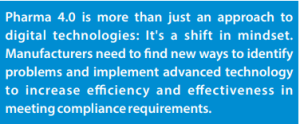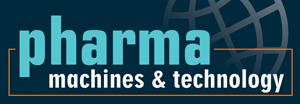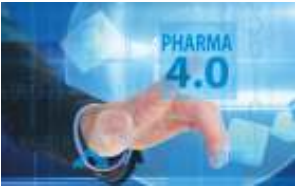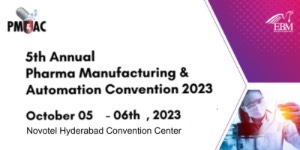Pharma 4.0
Digital Transformation for the 21st Century
By Rameshwar Verma
This article explores the potential of Pharma 4.0 to revolutionize the pharmaceutical industry in the 21st century, providing an in-depth look at the latest advancements in the field and how they can be used to improve patient outcomes.

In today’s rapidly evolving technological landscape, businesses across industries are increasingly considering digital transformation to stay competitive and meet the changing needs of their customers. The concept of Pharma 4.0 digital transformation refers to the integration of digital technologies and processes in the pharmaceutical industry to enhance productivity, efficiency, and innovation. This transformation encompasses various aspects of the pharmaceutical value chain, including research and development, manufacturing, supply chain management, and patient engagement.
The digital revolution has drastically changed the way we live, work, and interact with one another. With the advent of technologies such as artificial intelligence, cloud computing, and the Internet of Things, businesses are now faced with the challenge of adapting to this rapidly evolving digital landscape. This is where digital transformation comes into play.
What is Pharma 4.0?
Digitalization, an important component of Pharma 4.0, will connect everything, creating new levels of transparency and adaptivity for a “smart” plant floor. This will enable faster decision-making and provide in-line and on-time control over business, operations, quality, and regulatory compliance. Notably, this new connectedness will require higher levels of security, since linked systems heighten vulnerability.
Pharma 4.0 introduces more connectivity, increased productivity, simplified compliance, and the ability to leverage production information to respond to problems as they emerge.
Pharma 4.0 is more than just an approach to digital technologies: It’s a shift in mindset. Manufacturers need to find new ways to identify problems and implement advanced technology to increase efficiency and effectiveness in meeting compliance requirements.
From connecting workers to introducing more human-centric workflows to driving shifts in company culture, humans are at the core of Pharma 4.0. As such, companies must do more than automating processes.
- Application of digital technologies to improve efficiency, reduce costs, and improve patient
- Part of the larger trend of Industry 4.0.
- Embracing of cloud computing, big data, and the Internet of Things (IoT).
Key Components/ Pillars of Pharma 4.0
- Internet of Things (IoT)
- Artificial Intelligence (AI)
- Big Data Analytics
- Robotics and Automation
- Cloud storage
- Blockchain
- Remote communication technologies
Pillars of Pharma 4.0
Benefits of Pharma 4.0
They try to help organizations achieve “business goals by operating faster, reducing costs, and being more competitive and agile.
- Decreased costs.
- Improved efficiency.
- Increased patient outcomes.
- Increased opportunities for innovation.
- Improved collaboration and communication.
To achieve this level of operation, you must consider the following:
- A shift to a risk-based and integrated approach for validation.
- The implementation of a holistic control strategy secured to validation.
- The increased focus on data for quality assurance and compliance.
- The elimination of paper-based processes and paper
- The elimination of data store with better communication across the lifecycle of drugs.
- A lower-touch relationship with regulatory bodies as data collection and sharing improves
Ladders to Reach Pharma 4.0
Stages of Digital Maturity: Digital maturity, the transformation must begin now – starting with computerization to make operations more efficient.
 To ensure success, manufacturers must take a methodical approach in which each stage builds upon the previous one:
To ensure success, manufacturers must take a methodical approach in which each stage builds upon the previous one:
- Computerization: Creating the basis for a digital infrastructure.
- Connectivity: Enabling staff members to accomplish tasks more efficiently.
- Visibility: Connected people, machines, and processes create a substantial digital record of production that can be used to make real-time, data-driven decisions.
- Transparency: With more data, new insights about complex systems become available. Advanced analytics provide you with evolving opportunities for improvement.
- Predictability: Detail production records enable manufacturers to correct problems before they happen.
- Adaptability: Systems anticipate problems and initiate the proper action by themselves. At their most advanced, these systems become autonomous and self-correcting.
Data Integrity by Design
Data integrity is one of the areas in which Pharma 4.0 can contribute the most. In fact, the ISPE outlines “Data Integrity by Design” as a desired outcome of digital maturity.
Despite knowing this, many pharmaceutical companies continue to trust on error-prone, paper-based documentation. During manufacturing, engineers record machine states, batch information, and production schedules in paper forms. These logs are labour thorough, prone to transcription error, and difficult to reference. Mistakes caught at the end of the process often leave few options available for corrections.
With Pharma 4.0 solutions, manufacturers can implement process checks on the most critical data and catch deviations in real time. This makes it possible to manufacture with a right the-first-time approach – saving time in exception handling.
Electronic Logbooks
Electronic logbooks automatically document relevant production information – reorganization a manual process while dramatically improving data integrity. These logbooks can compile and integrate information from machines and operators, increasing process visibility.
Further, electronic logs can integrate photos, notes, reason codes, device history records, and locations – providing a more holistic record of production than paper-based forms.
Electronic logbooks ensure that information is attributable, legible, contemporaneous, original, and accurate (ALCOA).
Because these logs are digital, they can be easily accessed to prove compliance.
Line Clearance
Many line clearance processes are complex, time-exhaustive changeovers. With paper-based processes, workers may use a significant amount of time looking for the next step or validating the execution of the previous one, reducing the amount of time they must progress through the procedure.
Collaborative, Digital line clearance applications can make line clearance easier to navigate. Digital, IoT-enabled work instructions guide users through SOPs – increasing efficiency while ensuring that work is performed correctly and validated automatically. The applications record how long each step of the process takes, serving to improve process visibility and enable engineers to locate areas for process improvement. Because these apps are collecting and communicating data in real time, engineers can view process status as work unfolds, leading to reduced downtime and more effective scheduling.
Electronic Batch Records
Batch record reviews require compiling and reviewing a large quantity of manufacturing data and process documentation.
Much of the labour spent in the review process comes from identifying incorrect or illegible entries and correcting records so that all production information is available for a given batch.
With Pharma 4.0 tools, manufacturers can make data collection and validation a continuous, seamless part of the manufacturing process. Information about manufacturing processes is automatically collected as operators and machines work, and all data is thereby attributable, legible, contemporaneous, original, and accurate.
When it’s time for a batch record review, the necessary information is accessible and easy to read. Manufacturers can spend more time ensuring the quality of a product and less time correcting transcription errors.
Training for Regulated Environments
Many manufacturing processes require a significant investment in training. This challenge is further made worse during periods of high employee turnover, which result in a loss of expert knowledge on the team. Training can be slow, as manufacturers often have a difficult time replicating real-life production scenarios in their training programs. Lengthy training times are expensive, decrease productivity, and reduce quality if technicians aren’t trained properly.
Using manufacturing apps, manufacturers can design pharma-specific training applications to get employees on the line fast. If it’s not possible to take workers off the line during reskilling periods, training applications can be configured to facilitate on-the-job training (OJT).
Manufacturers can even simulate processes by running training apps in a staging environment using Workspaces. This sets up a separate environment that allows you to track operator performance without having training data impact your production data.
Challenges of Pharma 4.0
1. Regulatory compliance: Pharma 4.0 technologies involve the use of advanced systems and software, and regulators need to ensure that they meet the required standards. Ensuring compliance with regulatory requirements is a significant challenge that pharma companies must address.
2. Data privacy and security: With the increasing use of data analytics, artificial intelligence, and other advanced technologies, the pharma industry is generating vast amounts of data. However, ensuring data privacy and security is a major challenge, as the data is often sensitive and subject to regulatory scrutiny.
3. Integration of legacy systems: Many pharma companies still rely on outdated systems that cannot easily integrate with new digital technologies. Integrating legacy systems with modern digital technologies is a significant challenge that requires careful planning and execution.
4. Talent acquisition and retention: Pharma 4.0 requires a new set of skills, including data analytics, artificial intelligence, and machine learning. Attracting and retaining top talent with these skills is a significant challenge for pharma companies.
5. Cost: Implementing Pharma 4.0 technologies requires a significant investment in infrastructure, software, and talent. Cost is a significant challenge for smaller pharma companies or those with limited resources.
Reference:
1. Bringing Industry 4.0 to Pharma: A Breakdown of How to Drive… | Tulip
2. Pharma 4.0 Operating Model | Industry 4.0 | ISPE | International Society for Pharmaceutical Engineering
3. Pharma 4.0: The Future of Pharmaceutical Manufacturing (qbdgroup.com)
 About the Author
About the Author
Rameshwar Verma is a part of the leadership team of an esteemed pharmaceutical company as an Executive – Packing (Serialization
Specialist) with 8+ years of experience. He has good knowledge about serialization system, pharmaceutical packing, industry 4.0, QMS,
electronic records and compliance. He is the author of the books: “Basic concept of track and trace system for pharmaceutical industry” and “Pharmaceutical track and trace system: A guide to optimizing efficiency and compliance”.





